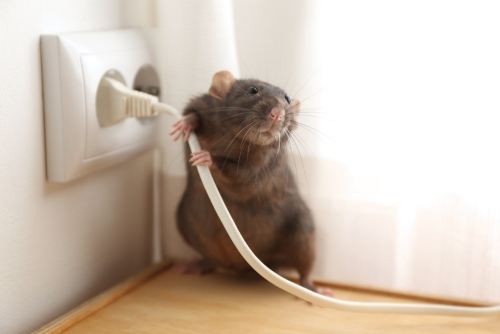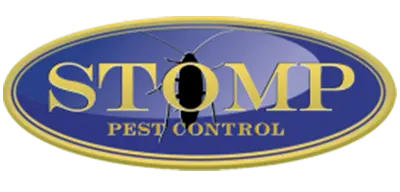Winter has arrived in Raleigh, and while we know many of you are sad to say goodbye to warm weather and long, sunny days, you’re probably not sorry to see summer pests go. After all, mosquitoes, ants, bees, and other bugs are the bane of every summer as these pests invade our yards and homes.
However, winter brings a new problem with pests. Instead of being a bother when you go outside, bugs and rodents are looking for a place to survive the cold until spring, driving them into homes and businesses. To prevent overwintering pests from overstaying their welcome in your home, our Raleigh pest control company is sharing how to get rid of and prevent bugs and rodents in your home this winter.

What Does Overwintering Mean
Overwintering, as you might have gathered from the name, is the process used by some insects and animals to survive the winter as it makes normal activity impossible. As temperatures drop and food sources become harder to find, many insects face challenges in keeping up their metabolic processes. Overwintering pests are able to survive through the winter months, so they can resume their activities in the spring.
There are a few ways that pests might overwinter.
Hibernate as Adults
Some insects, such as ladybugs and certain butterfly species, hibernate in protected locations during the winter. They seek shelter in crevices, leaf litter, or other insulated spots where they can remain dormant until warmer weather returns.
Burrow in Soil
Certain insects, like beetles and ants, burrow into the soil to escape the cold. The soil provides insulation, protecting them from extreme temperatures. They may also enter a state of diapause, a suspended animation-like condition, to conserve energy. Alternatively, ants may find their way inside your home, especially in the cold months when their food supply outside is scarce.
Seek Shelter in Structures
Insects may find shelter in human-made structures, such as buildings or homes, to escape the winter chill. Common examples include stink bugs, cluster flies, and boxelder bugs. These insects may congregate in attics, wall voids, or other secluded areas.
Egg or Larval Stage
Other insects overwinter in the egg or larval stage, allowing them to avoid the challenges of winter in their more vulnerable adult form. In the spring, they hatch to continue their life cycle.
Freeze Tolerance
Certain insects have developed physiological adaptations that allow them to survive freezing temperatures. They produce antifreeze compounds or undergo controlled freezing of body fluids, preventing ice crystals from damaging their cells.
Migrate to Warmer Regions
Some species of butterflies and dragonflies migrate to warmer regions for the winter, much like the well-known migration of monarch butterflies. This allows them to escape the cold and find more favorable conditions for survival.
Types of Overwintering Pests
Technically, most living creatures overwinter – the term really just means “passing or surviving the winter” – plants, birds, even people who go to warmer climates for the winter can be described as overwintering.
However, overwintering pests might become a problem to homeowners in the winter months, especially if they decide to lay their eggs or have their young in your home. Here are the most commonly cited overwintering pests in North Carolina.
Box Elders
Boxelder bugs are small, oval-shaped insects, with distinct reddish-orange markings, including three stripes on their thorax and red veins on their wings. Adult boxelder bugs have fully developed wings and are capable of flight. During the warmer months, they feed on the sap of host trees, primarily boxelder trees, using their piercing-sucking mouthparts to extract nutrients.
As winter approaches, boxelder bugs enter a state of dormancy and seek shelter to overwinter. They often gather in large numbers on the sunny sides of buildings, rocks, or trees, particularly on surfaces with a southern or western exposure.
Ants
Ants in North Carolina are diverse, with various species adapted to the region’s climate and ecosystems. Common ant species in Raleigh include carpenter ants, odorous house ants, fire ants, and Argentine ants, among others. Ants play crucial roles in the environment, participating in soil aeration, seed dispersal, and predation.
These insects exhibit diverse overwintering strategies depending on the species. Unlike some insects that enter a state of dormancy during the winter, ants remain active throughout the year, even in colder months. They might burrow into their nests to find protection in the soil, regulate their body temperatures, reduce their activity, or seek shelter inside.
Ladybugs
One common species of ladybug in North Carolina is the multicolored Asian lady beetle. These are recognizable by their dome-shaped body and distinctive spots. While ladybugs are beneficial in gardens in the warmer seasons, homeowners may find these overwintering pests clustered indoors.
Their overwintering habits fall into a few different categories: Gathering in large groups, seeking shelter inside, and entering a state of diapause.
Stink Bugs
Homeowners in North Carolina are no strangers to the stink bug. These shield-shaped insects prepare for the winter months by seeking shelter in protected spaces like homes, buildings, and other structures where they can find warmth and refuge. Stink bugs often enter homes through small openings and gaps, becoming unwelcome guests seeking a cozy haven. Once indoors, they enter a state of torpor, slowing down their metabolic processes to conserve energy during the colder months.
Ticks and Fleas
Ticks and fleas pose concerns for both humans and pets in North Carolina, in part due to their tendency to transmit dangerous diseases. Ticks, such as the black-legged tick, and the lone star tick, thrive in areas with wooded areas and tall grasses. These overwintering pests do not have specific habits, but their activity may be reduced during colder months.
Fleas, on the other hand, are wingless insects that infest mammals, including pets and humans. Fleas do not have a traditional overwintering phase, as they can survive indoors throughout the year. That means they are more likely to seek shelter in homes in the winter months, causing discomfort for both pets and their owners. Effective year-round flea prevention involves regular pet treatments and maintaining a clean living environment to reduce the risk of infestations.
Caterpillars
The specific overwintering habits of caterpillars vary depending on the species, but many of the local varieties in North Carolina adopt strategies that involve protective measures during the colder months. Some caterpillars enter a state of diapause to conserve energy and survive through winter, while others may seek shelter under leaf litter, in bark crevices, or in other hidden locations to shield themselves from harsh weather conditions.
Some even spin silk cocoons or create shelters using leaves or other materials to insulate themselves, emerging in spring to resume their development into adult butterflies or moths.
Beetles
There are more than 200 types of beetles in North Carolina, ranging from the metallic-colored ground beetles to the charming lady beetles. As winter approaches, some burrow into the soil, utilizing it to shield themselves from harsh temperatures. Ground beetles, for instance, are known to seek refuge beneath leaf litter or within rotting wood.
Other beetle species may overwinter in protected locations, such as the crevices of tree bark or within the cozy confines of fallen logs.
Spiders
From the orb-weaving garden spiders to the stealthy wolf spiders, North Carolina is home to a wide variety of spider species—some harmless, others, are venomous and dangerous. As winter approaches, spiders, being cold-blooded, often face challenges associated with lower temperatures. While spiders do not have a unified overwintering strategy, some species exhibit behaviors to survive the winter months.
Certain ground-dwelling spiders, like wolf spiders, may seek shelter under leaf litter or within vegetation to protect themselves from freezing temperatures. Orb-weaving spiders, known for their intricate webs, may produce egg sacs containing future generations, strategically placing them in protected locations. These egg sacs serve as a safeguard, ensuring the spider’s offspring have a higher chance of survival during the colder months. Some other adult spiders may enter a state of torpor, slowing down their metabolic processes to conserve energy until the return of warm weather.
Mice and Rats
The most common of these pests in our state include the Norway rat and the house mouse, each known for their ability to thrive in a variety of habitats. Seeking warmth and shelter, rats and mice often attempt to enter homes and other structures as part of their overwintering strategy, posing a potential nuisance and health risk for everyone inside.
Cockroaches
Cockroaches are notorious for their ability to thrive in diverse environments. As winter approaches, these adaptable insects often seek shelter indoors to escape the colder temperatures. Once indoors, cockroaches can find hiding spots in dark, secluded areas such as kitchens, bathrooms, and basements. Their ability to feed on a wide range of organic matter and adapt to nearly any situation makes them a huge nuisance year-round.
How to Prevent Overwintering Pests
Once bugs or mice take up residence in your home, it can be hard to get rid of them, so you’ll want to prevent them from getting inside in the first place.
Starting with the outside of your home, get rid of any spaces that will draw bugs and pests. This includes moving firewood away from the house, raking piles of leaves, and cleaning debris out of gutters as these are common habitats for rodents and bugs. After that, prevent access to the inside of your home by caulking even the smallest cracks and crevices around your foundation, windows, and pipes. Mice and insects can squeeze into incredibly small spaces, so keep that in mind when you’re sealing up cracks.
Inside your home, go ahead and seal spaces around outlets, pipes under the sink, and any other interior cracks and crevices around doors, windows, and floorboards. If they make it into your walls, you don’t want them to make it in any further!
After your home is sealed, keep it clean. Mice especially are drawn to food that’s left out while beetles and other bugs may be attracted to dirt and dust. Keeping your home tidy will reduce the risk of attracting critters.
Getting Rid of Overwintering Pests
If your defense didn’t work and you have a pest problem, they are most likely hiding in dark, secluded areas, like your attic, basement, within the walls, or behind appliances. You can set mouse traps to catch any mice or spray for bugs in those areas. However, your best bet is to contact a Raleigh pest control company that can both rid you of your winter guests and set up prevention measures to keep them out.
Contact Our Raleigh Pest Control Service to Prevent Overwintering Pests!
If you want to prevent or get rid of overwintering pests, Stomp Pest Control can help! We work with homes and businesses around the Triangle, ridding homes of mice, spiders, ants, termites, and more. In addition to our extermination services, we also offer affordable pest control programs with a 100% satisfaction guarantee—sign up for a monthly pest control plan with Stomp Pest Control today, starting at as low as $25/month!
To get started, reach out to us by calling (919) 231-3292 or fill out our form below to schedule a consultation.

